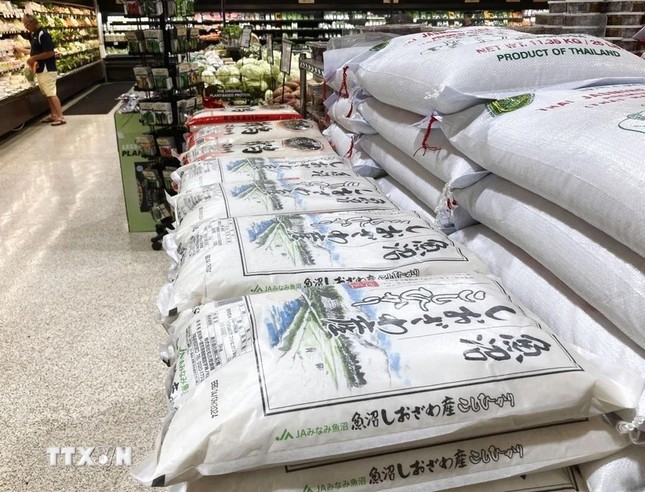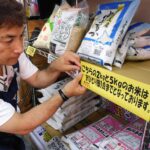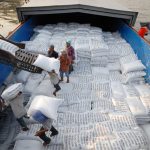Soaring Prices: Japanese Rice Reaches an All-Time High
Since 2024, Japan has entered a critical phase of rice supply crisis. Domestic rice production has significantly declined due to prolonged extreme hot weather, greatly impacting the 2023 harvest season. Additionally, surging consumption driven by a record-high number of tourists visiting Japan post-COVID-19 has further strained the domestic market.
The increasingly evident shortage has led to a relentless surge in rice prices in Japan. According to data from the Ministry of Agriculture, Forestry, and Fisheries, during the week of April 28 to May 4, the average retail price of a 5-kg bag of rice at supermarkets was 4,214 yen (approximately 28 USD). This price has doubled compared to the same period last year (2,106 yen/5kg in 2024).
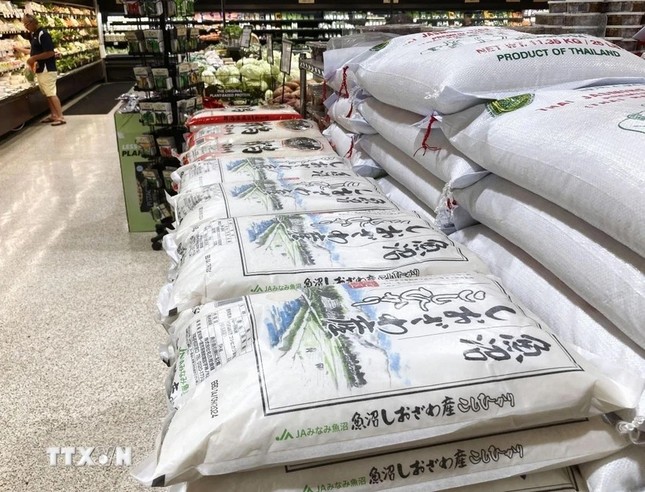
Japanese rice on display at a supermarket. Source: Kyodo/TTXVN.
Faced with skyrocketing prices, the Japanese government has intervened by releasing rice from its reserves. From March to April, there were three auctions, releasing a total of 321,000 tons of rice into the market. However, the supply still falls short of demand.
According to Kyodo, officials are considering almost doubling the amount of rice released from reserves, planning to supply an additional 100,000 tons per month from now until July.
Apart from the primary factors mentioned above, the hoarding mentality among Japanese citizens due to concerns over natural disasters, floods, and earthquakes further exacerbates the supply tension. Businesses in the foodservice industry, such as restaurants and hotels—which account for a significant portion of consumption—are forced to adjust their purchasing plans. Some prominent restaurant chains and supermarkets have started looking to foreign sources for rice—a rare occurrence in Japan, known for its discerning and loyal domestic rice consumers.
A Golden Opportunity for Vietnamese Rice
With the Japanese market facing a shortage and becoming more open to imported rice, Vietnam emerges as a potential candidate thanks to its advantages in quality, price, and adaptability. In reality, the demand for seeking new suppliers from Japan’s trading partners has increased significantly.
According to Japannews, Kanematsu Corp., a prominent general trading company, is considering doubling its annual rice imports from 10,000 tons to 20,000 tons, sourced not only from the US but also from Taiwan and Vietnam.
Mr. Takashi Takanashi, co-managing director of Spice House—a company supplying imported rice to restaurants and food stores in Japan—stated, “There is a growing interest in Vietnamese rice.” Vietnam’s white rice, similar in shape and taste to Japonica, is sold at 3,240 yen/5kg, significantly lower than the nearly 4,000 yen price of domestic rice, giving it a substantial price advantage.
Spice House began importing Vietnamese rice in late 2024 with 200 tons, and their inventory is now almost sold out. They are currently limiting the purchase quantity per customer due to demand exceeding expectations. This proves that when quality and taste compatibility are ensured, Vietnamese rice can conquer even the most demanding markets like Japan.
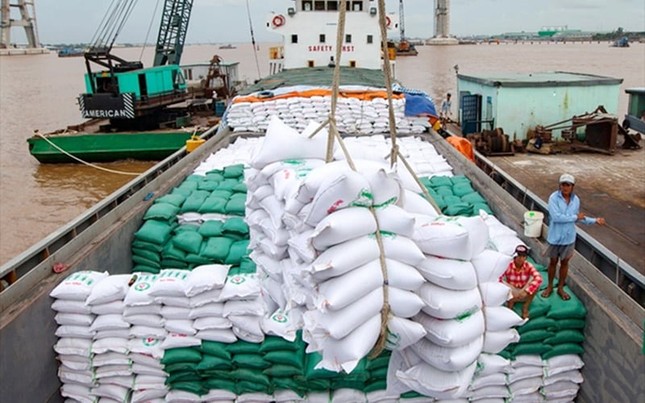
Japan has a high demand for imported food. Illustration: IT.
Mr. Do Ha Nam, Chairman of the Vietnam Food Association (VFA), assessed: “Vietnamese rice is in the upper-middle segment and is moving towards a higher segment, with its value and brand becoming more distinct. In this segment, the demand is very high, especially in markets such as Japan, the US, and the EU. The unprecedented rice price surge in Japan, lasting from last year to now, shows no signs of cooling down. This presents a vast opportunity for Vietnam to expand the production and export of fragrant and specialty rice.”
A Vietnamese company has completed procedures with its Japanese partner and is expected to export its first rice batch to the Japanese market in June. Another company is also preparing to export its first carbon-labeled rice batch to Japan.
However, penetrating the Japanese market is not without challenges. Vietnamese rice must meet stringent requirements, with 624 criteria for pesticide residue and food hygiene and safety, undergoing three independent inspections. Therefore, quality control from the production stage is a prerequisite.
To meet the increasingly high standards, many Vietnamese enterprises have joined closed-loop value chains, partnering with farmers to grow rice under contracts, using high-quality seeds, and adopting sustainable farming practices. Notably, the “1 Million Hectares of High-Quality, Low-Emission Rice Project” initiated by the Ministry of Agriculture and Environment is expected to be a turning point in enhancing the value of Vietnamese rice.
The Great Japanese Rice Shortage: A 5kg Bag is Hard to Come By, with Shoppers Limited to One Per Person.
Like many other Asian countries, rice is a staple food in Japan. However, rice shortages in Japanese supermarkets have become a frequent occurrence, causing disruptions in various localities.
Serious Rice Shortage in Indonesia
The domestic price of rice has reversed its upward trend as Indonesia has increased its rice import quota by an additional 1.6 million tonnes, raising the country’s total rice imports for 2024 to 3.6 million tonnes.

